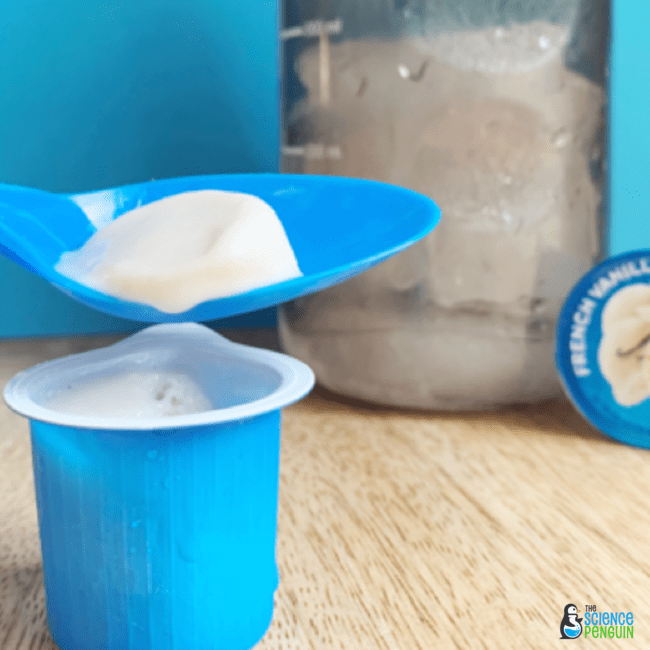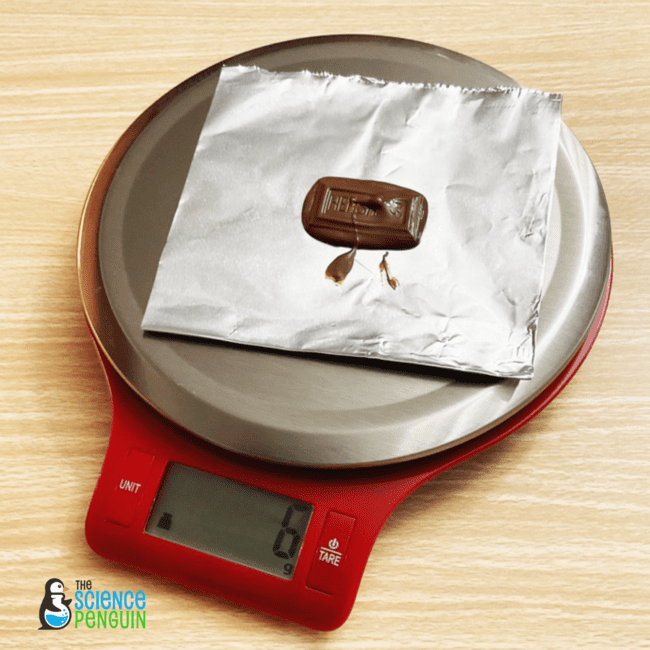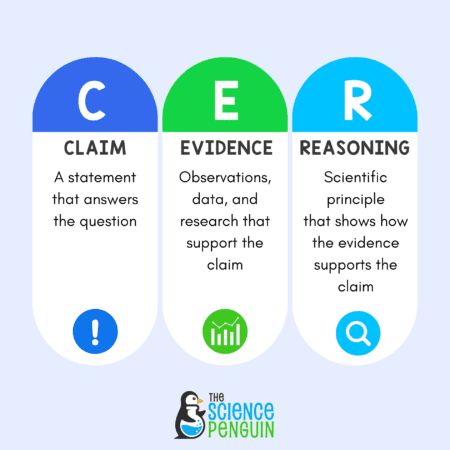
When you’re new to teaching, you sometimes miss opportunities that you later discover. When I was teaching 5th graders about evaporation, freezing, condensation, and melting, I focused on the terms heating and cooling.
There’s nothing wrong with using those terms, but in order to be MORE correct, I changed my terminology to removing thermal energy and adding thermal energy.
It was just a little change that helped prepare 5th graders for middle school science.
This can be such a fun topic to teach whether you’re working with preschoolers or 5th graders.
My kindergartener and I have done the Sunlight & Shadows investigation and made ice cream.
You can explore the processes with younger students, then take it up a notch by demonstrating the conservation of matter in upper elementary.
Have fun teaching!
1. 📊 Make an Anchor Chart

Make an anchor chart and student graphic organizers to organize changes to physical state.
On your anchor chart, identify:
- the 3 physical states
- the 4 processes
- particle movement in each state
- changes in temperature or thermal energy depending on grade level
See more printable graphic organizers on TpT: Elementary Science Graphic Organizers
2. 🍦 Make Ice Cream

There are many ways to make ice cream but the ease of this method makes it my favorite! You need a reusable water bottle, ice, salt, and mini coffee creamers.
Materials
- Sports bottle filled ¾ with ice, 2 tbsp of salt on top, and a splash of water (the bottle needs to be big enough to put ice and a mini-creamer in)
- Mini coffee creamers (I like French Vanilla)
Procedure
Be sure your bottle is 3/4 full of ice and has 2 tbsp of salt and a splash of water.
2. Shake your mini creamer. What do you hear?
3. Put your mini creamer in the water bottle and shake, shake, shake for 3 minutes.
4. Let the next student take a turn. You may need to dump out some water and add more ice or salt.
5. Chat: What change occurred?
Try it on your own or pick up all 3 changes to matter lab printables on TpT: Changes to Matter Labs in a Snap
3. ☀️ Build a Solar Still
Use this video to introduce using solar stills for collecting rainwater. Answer the questions at the end of the video:
- What location would maximize the freshwater collection?
- What factors contributed to the limited collection of freshwater?
- At the current rate of 10 ml every 5 hours, how much time would we need to collect all 700 ml?
- How can you improve this design?
Challenge students to build a solar still. You can use the tips in this free resource to set up your solar still.
Access the freebie on TpT: Solar Still Family Science
4. ⛅️ Sunlight and Shadows Investigation

This is a simple activity that can be used Pre-K though 5th.
Locate an area outdoors, such as a sidewalk or driveway, that is in direct sunlight and partially covered by a shadow.
Use a paintbrush and cup of water to paint a simple image (i.e. heart, sun, smile, your first initial) in the sunlight and in the shadow. It needs to be something simple so the start time is practically the same.
Use the camera to take pictures of the image every 3 minutes for 12 minutes total or make a time-lapse video!
5. 🍫 Incorporate Conservation of Matter

If you teach 4th or 5th grade, you may want to incorporate conservation of matter during physical changes like melting.
This is part of 5th grade NGSS and will be a concept taught in the new 4th and 5th grade science TEKS.
Materials
- chocolate square or Hershey’s kiss
- small piece of foil
- hot plate
- balance or scale
- insulating gloves
Procedure
- Measure the foil square’s mass.
- Measure the mass of the chocolate on the foil. Subtract the foil’s mass.
- Melt the chocolate on a warm hot plate. PRACTICE HEAT SAFETY.
- Measure the mass of the chocolate and foil again. Subtract the foil’s mass.
- Compare the mass of the chocolate before and after melting.

Sign up for the Free Resource Library
This is an exclusive library of 40+ science printables, labs, activities, and games for grades 3-6. Sign up and check your email for immediate access.










